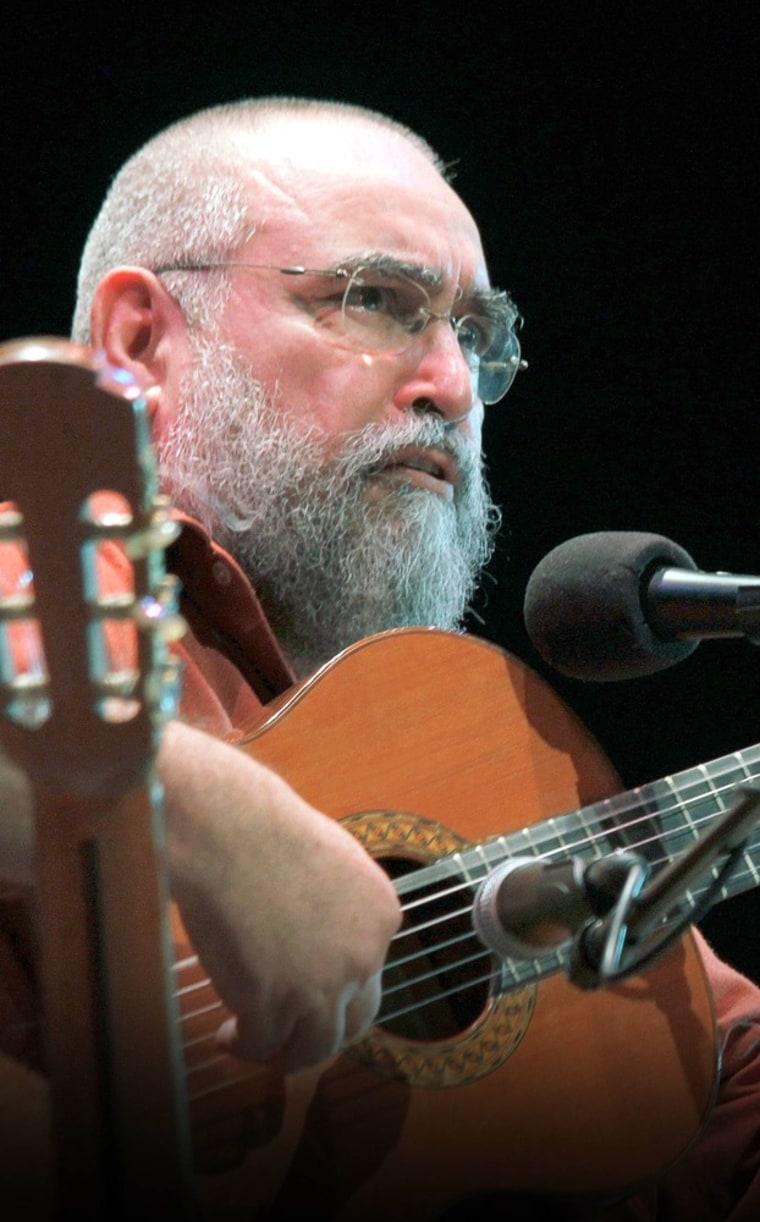Restrictions on travel to Cuba have eased over the past year — good news for those looking to experience Cuba’s dynamic culture. It’s still not simple to hop to the island, though: U.S. travelers to Cuba must obtain a U.S. government-issued license, currently available for educational, religious, family and professional travel. For some Americans, those restrictions, paired with the cost of an organized tour with a valid license, make travel to Cuba still out of reach. But there are other places closer to home to get a taste of Cuba — without even going to Miami.
New York City has a centuries-long cultural connection with Cuba, and over the next few weeks is brimming with special events and tastes to satisfy stateside Cubaphiles.

Music
On June 3, Cuban bohemians young and old will crowd SOB’s nightclub to see Pedro Luis Ferrer, a controversial Havana folksinger blacklisted by the government for years for his tongue-in-cheek criticism of the revolution. (A concert originally slated for May 10 was postponed due to illness.) In a country where the average monthly salary is around $20, and few Cubans can afford luxuries that tourists enjoy, his song "100% Cubano" has a deceptively comic tune and biting lyrics: “Since my Cuba is 100 percent Cuban…tomorrow I’ll reserve the best hotel in Havana...with this money of mine I earned cutting sugarcane.”
Although some U.S. musicians still have problems securing visas to Cuba, says SOB’s owner Larry Gold, these days it’s exponentially easier to bring Cuban acts to the United States. “It’s not like during the Clinton era,” Gold says, when Cuban musicians came after decades of isolation and “there was a real taste of the forbidden fruit.” Now, Gold says, “We consistently do all types of Cuban music, from son to timba to trova. Cuban music has the mother lode of rhythms — so many different rhythms within such a small country.”
For a selection of musical styles: SOB’s will host Cuban reggaeton newcomer Osmany Garcia on May 24, and on May 26 a festival of rapid-fire timba (Cuban salsa) comes to the Armory for an eight-hour-long concert including stars NG La Banda and Manolito Simonet.
Food
Northern New Jersey is home to the largest Cuban-American population outside of Miami, but there are plenty of spots in New York City to grab a plate of ropa vieja (beef stew), tostones (fried green plantains), and black beans, tossed back with a mojito or Cuba Libre.
In the West Village, Havana Alma de Cuba has a $5 mojito happy hour Monday through Friday, and complimentary cigars for customers Tuesday and Wednesday evenings (though not the real deal from Havana). Another tasty option worth a trip — but just to Brooklyn, don’t worry — is Pilar Cuban Eatery in Clinton Hill, which serves a mean marinated roast pork pernil.
Art
One of Fidel and Raul Castro’s biggest talking points is the island’s free education system, including art schools which have produced a wealth of edgy, often conceptual contemporary art. Through June 23, the Center for Cuban Studies celebrates its 40-year anniversary with a show of painting, sculpture, drawings and mixed-media pieces by 25 Cuban artists, including up-and-coming emerging creators and those who came of age during the 1970s and 1980s.
For collectors looking to do more than browse, Chelsea’s Magnan Metz Gallery represents big-name Cuban artists, such as Alexandre Arrechea, a former member of the installation collective Los Carpinteros.
History
After all the eating, dancing and mojitos, leave time for a quiet Sunday afternoon in Central Park, spending time with the father of Cuban nationhood, Jose Martí. (Or a statue of him, at least, at W 59th Street and 6th Avenue.) Exiled in 1880 after being sentenced to six years in prison for organizing against the Spanish, Martí fled to New York, where he penned some of his most esteemed essays and poems — of which every good Cuban can quote dozens by memory for any occasion.
The statue shows a proud Martí on his steed forging into the war for independence from Spain, where he died on the battlefield in 1895.
Related stories